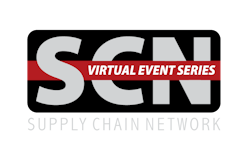
Results of the 20th annual North American Automotive OEM - Supplier Working Relations Index (WRI) Study released by Plante Moran show that of the six major U.S. and Japanese automakers, only Toyota and FCA made significant improvement in their scores this year.
Toyota gained nine points over its 2019 score and was the top performer in all 22 variables on the Working Relations Index®. FCA gained 10 points, but is still in a distant fifth place overall. Ford held steady with only a two-point gain. Honda dropped 18 points, GM fell 14 points and Nissan was off by 8 points and fell to last place.
“With the unprecedented challenges now facing the automotive industry, the OEMs will be leaning more heavily than ever on their suppliers. The study shows that Toyota knows how to work most collaboratively with its suppliers, is well trusted, and therefore is well prepared to face these challenges,” says Dave Andrea, Principal in Plante Moran’s Strategy and Automotive & Mobility Consulting Practice, which conducted the study.
An eight-year comparison of the OEMs’ performance provides additional insight. Toyota’s practice of “continuous improvement” has paid off with a 49-point gain since its low point in 2012, while GM improved by 18 points, and Honda 17 points. But, over the same eight-year period, Ford dropped three points, FCA fell 50 points and Nissan was down by 66 points.
Since the Working Relations Index® was launched in 2002, Toyota has held first place every year except two – 2009, 2010 – when Honda temporarily took over first place.
This year’s study ran from mid-February to mid-April. Respondents represented 841 salespersons from 503 Tier-1 suppliers, representing about 60% of the six OEMs’ annual buy.
“So far this year, the OEMs and their suppliers have gone through some of the toughest economic times in their history,” says Andrea. “Operational and financial recovery will be a challenge for everyone. The OEMs’ and auto suppliers’ finances are stretched to the limit by the cost of restarting production and further threatened by slow sales and fluctuating market demands.
“This means that the OEMs will have to rely even more heavily on their suppliers, and trust, combined with open and honest communication and strong relationships, will be critical to their success. I think it’s safe to say that those automakers who already have good relations will have an advantage over those with poor relations.”
OEM-supplier trust and communication is key
The study has shown the cornerstone of good working relations to be trust and communication, particularly important factors in the current uncertain business environment with billions of dollars and thousands of jobs at stake. The three-year average of supplier trust of OEM shows Toyota and Honda first and second, respectively; GM and Ford rank third and fourth with GM dropping significantly this year; FCA is in fifth place and Nissan, last. Communication is the other side of the same coin.
Supplier benefits vs. trust and communication
The level of perceived trust and communication of OEMs by suppliers when dealing with their customers is directly correlated to benefits the OEMs receive from them. I
Toyota and GM are most preferred, with Honda and Ford tied. FCA is preferred over Nissan which is last.
OEM purchasing area
The rankings in the overall WRI provide high-level insight, but the study also delves deeply into OEMs’ specific purchasing areas. By examining specific purchasing areas, management can determine where improvements are needed.
Toyota ranks best in all seven purchasing areas that it was reported in; Ford was highest in EV & Hybrid, without Toyota or Honda. FCA and Nissan ranked lowest. (This year, two new purchasing areas were added: EV & Hybrid Powertrains and Raw Materials.)
Engineering performance impacts supplier relations
“A number of years ago, the OEMs began breaking down the silos in the purchasing, engineering and product development areas to streamline them, improve communication between them and reduce cost and time to market,” said Andrea. “So, in addition to providing management a window into purchasing performance, the WRI® provides managers the ability to see how effectively these three areas are working together.”
For instance, the study asks suppliers to rank the OEMs on the extent of late or excessive engineering changes; whether the supplier is given enough flexibility to meet cost and quality objectives; whether suppliers are receiving conflicting engineering objectives; and if the supplier is involved early enough in OEM product development. All of these are critical issues to OEMs in order to reduce cost, improve quality and speed time-to-market.
In two measures that capture much of the nuance around this type of friction – engineering causing unnecessary costs and purchasing and engineering having conflicting objectives, Toyota improved (reverse measure), while FCA remained the same, so it did not detract from its other improvements. Nissan improved, but not enough to offset its declines in other areas.
“These are critical questions that show how important it is that all OEM functions are aligned to take cost and time out of the entire supply chain to deliver not only the OEM’s cost objective but help the suppliers’ cost and financial performance as well.”
“Focusing on improving supplier relations across purchasing, engineering and product development, is critical for the automakers right now,” said Andrea. “Suppliers contribute 60-70 percent of the value of the vehicle, so it is clearly in the OEMs’ best interest to set the goal of becoming the most preferred automaker to do business with – as Toyota obviously has.”
















